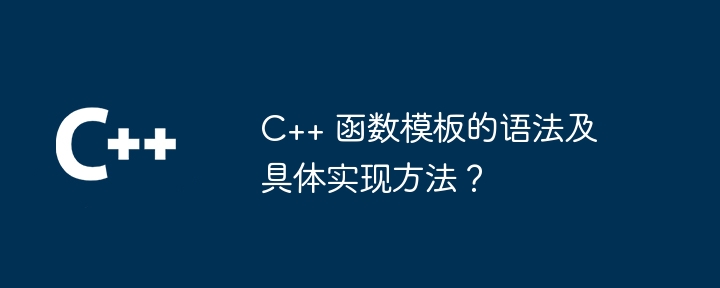Home >Backend Development >C++ >What is the syntax and specific implementation method of C++ function template?
What is the syntax and specific implementation method of C++ function template?
- 王林Original
- 2024-04-15 16:51:011305browse
C function templates allow functions to be defined using generic type parameters so that the function can handle different types of data. The specific implementation is as follows: Syntax: template 75a837cf562f69348eb0e119bf9e56d8 Return type function name (input parameter list) { // Function body } Generic type parameter T: Indicates the type that the function can handle. Practical case: For example, you can use the sum function template to calculate the sum of two integers and two floating point numbers.

C function template
Syntax
C function template uses generic types Parameters are used to define functions, allowing them to handle different types of data. The syntax is:
template <typename T>
returnType functionName(input parameters)
{
// 函数体
}Among them:
-
75a837cf562f69348eb0e119bf9e56d8: Generic type parameter, indicating the type that the function can handle. -
returnType: The return type of the function. -
functionName: Function name. -
input parameters: Optional input parameter list.
Specific implementation
The following code shows a function template that adds two elements of the same type:
template <typename T>
T sum(T element1, T element2)
{
return element1 + element2;
}Practical case
Let us calculate the sum of two integers and two double-precision floating point numbers:
int main()
{
// 调用函数模板,以 int 类型的参数
int integerSum = sum(5, 10);
// 调用函数模板,以 double 类型的参数
double doubleSum = sum(3.14, 2.71);
std::cout << "Integer sum: " << integerSum << std::endl;
std::cout << "Double sum: " << doubleSum << std::endl;
return 0;
}Output:
Integer sum: 15 Double sum: 5.85
The above is the detailed content of What is the syntax and specific implementation method of C++ function template?. For more information, please follow other related articles on the PHP Chinese website!

